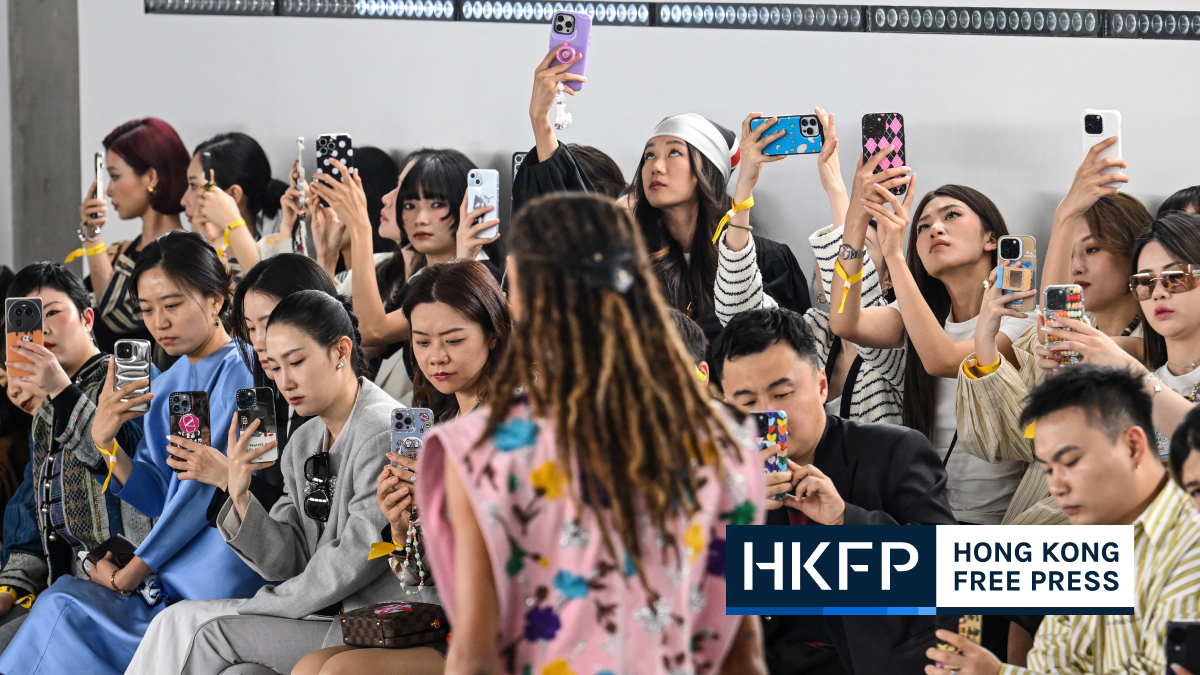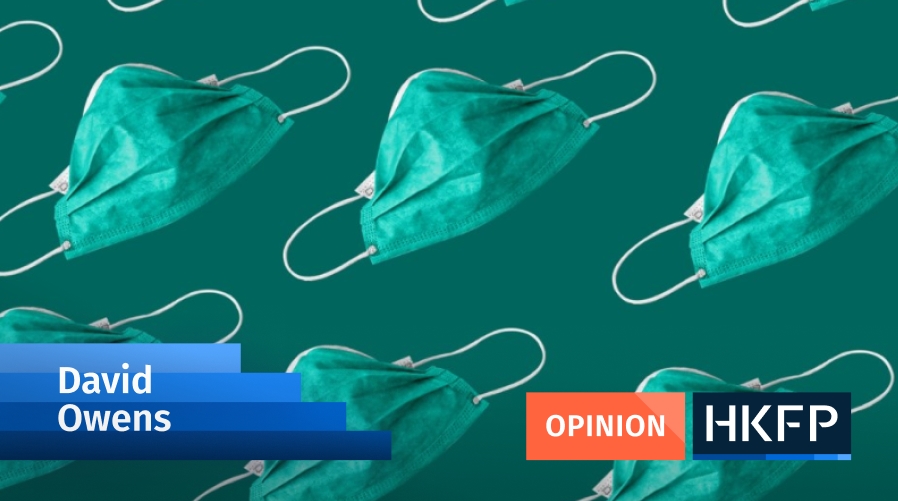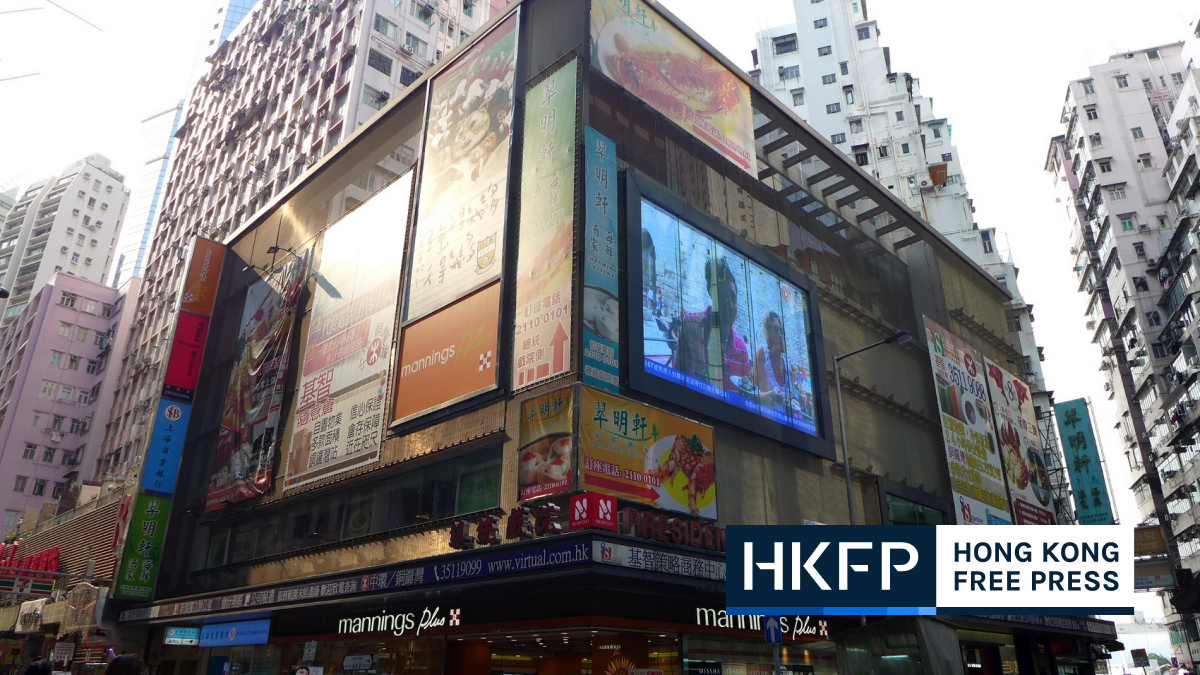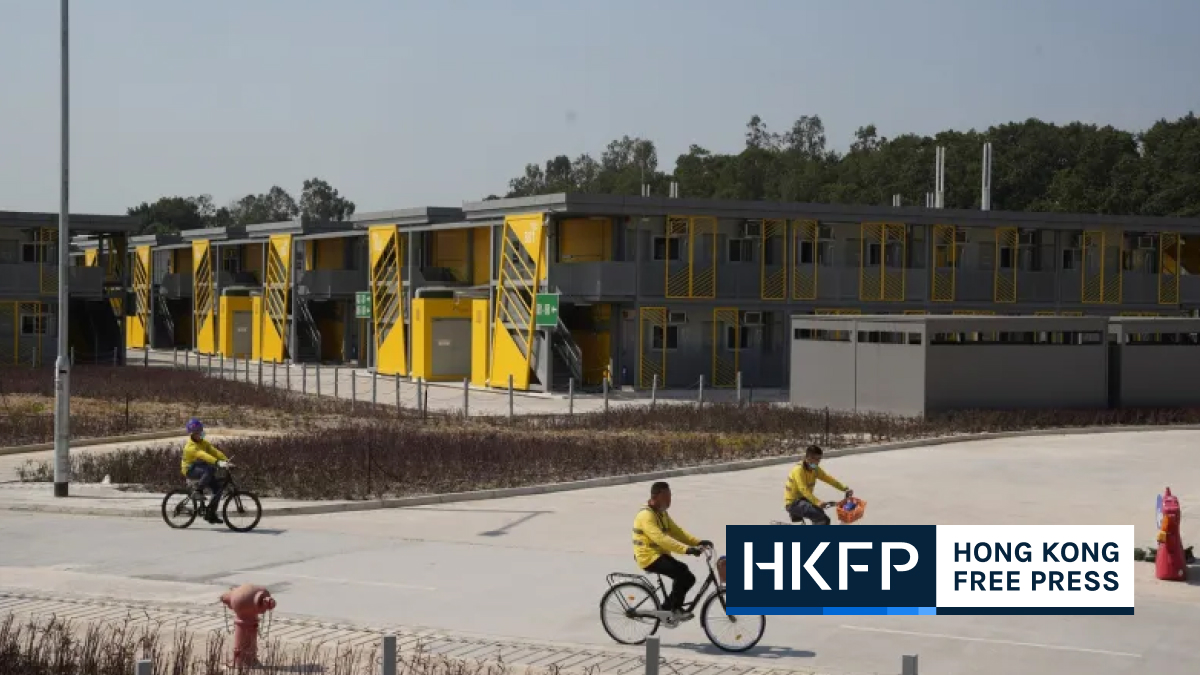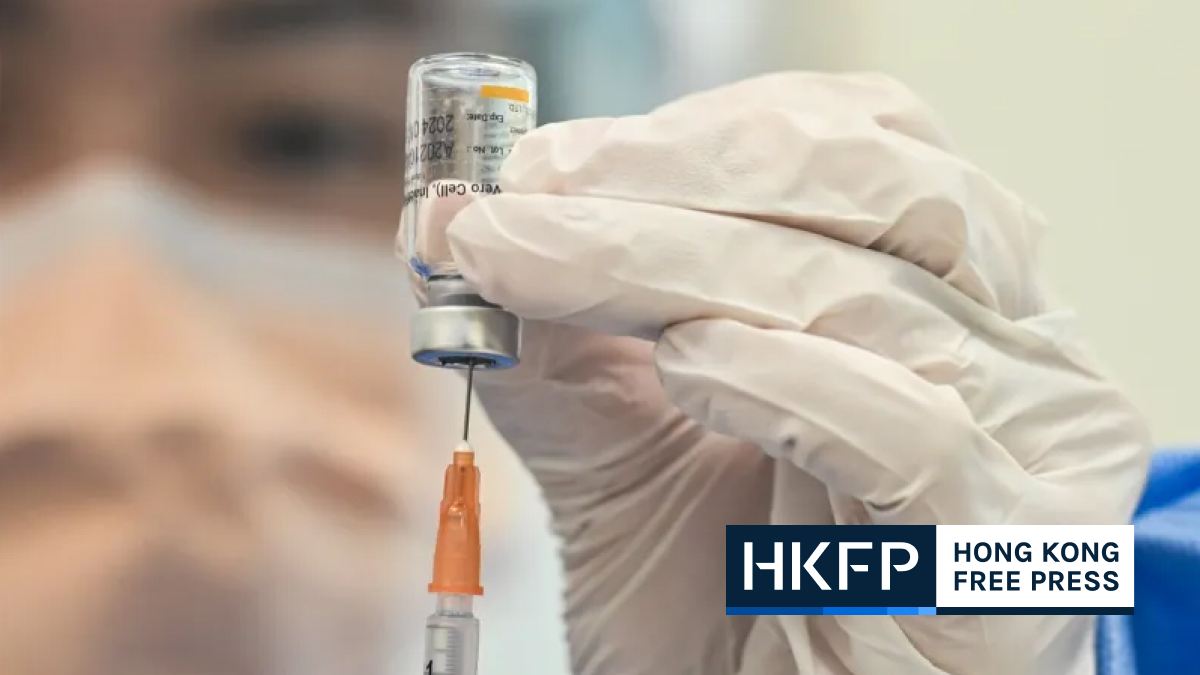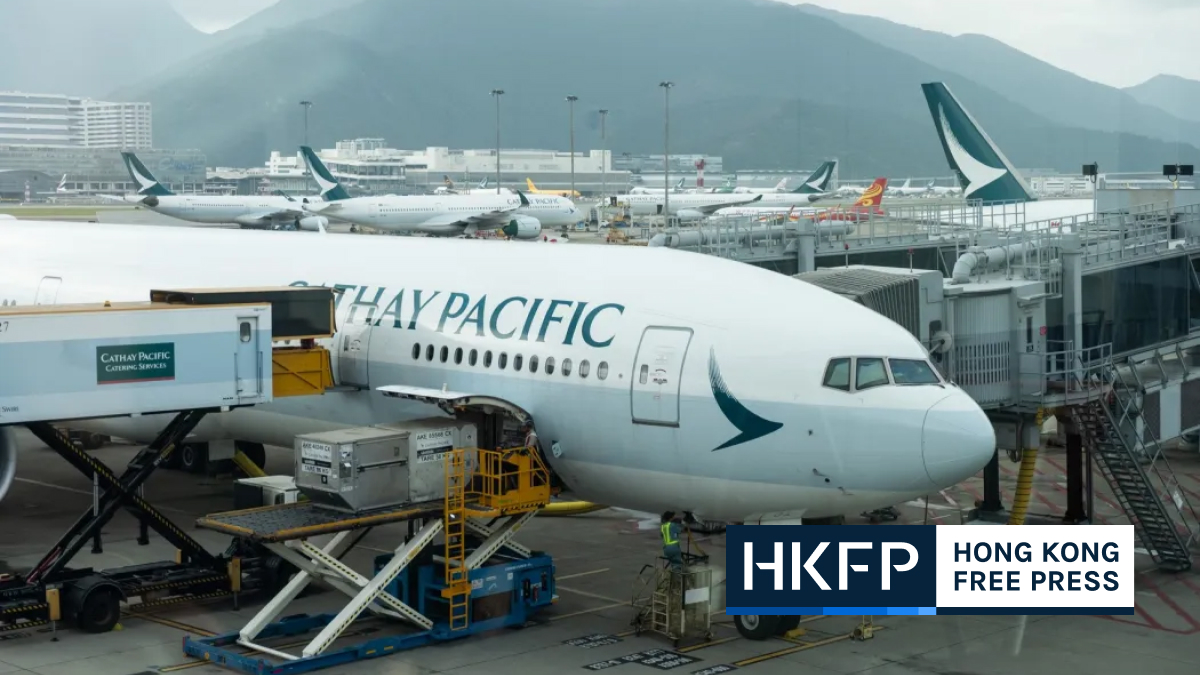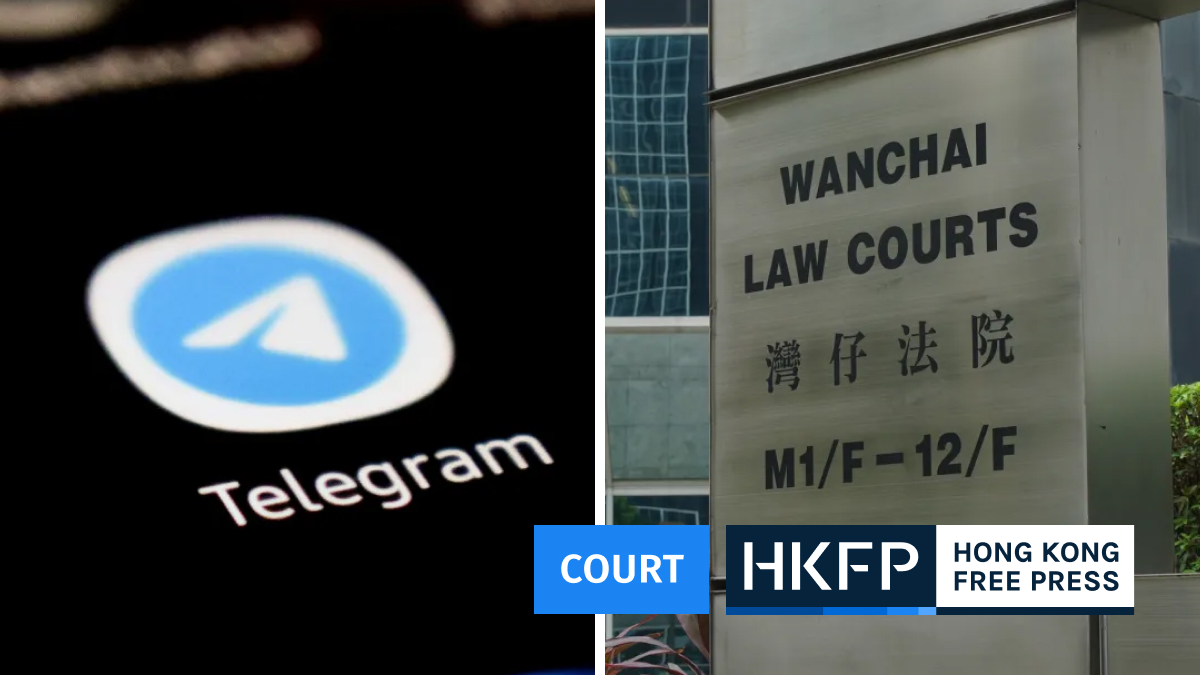The 3,900-bed Tsing Yi Covid-19 isolation centre was the first of eight new quarantine facilities built with help from mainland China to be completed. From its electric sockets to its bathrooms, there was much that needed adapting to Hongkongers’ needs.

As Omicron spreads through the city, the Hong Kong government has ramped up construction of these facilities to house Covid patients with mild or no symptoms. While the land has been lent by local developers, the building materials and other supplies were mainly provided by the mainland to assist in the city’s fight against its worst wave of Covid-19.
For days, residents at the Tsing Yi facility have complained to local media about the poor arrangement and shabby facilities. Meanwhile, the city’s security chief has warned that anyone who refuses to comply with quarantine orders requiring them to be sent to community isolation facilities may be committing an offence.
On Tuesday, a spokesperson from the Security Bureau said that 970 rooms at Tsing Yi were already in use, accounting for 80 per cent of its total capacity.
Long waits for admission
Ms. Lui was sent to the makeshift quarantine centre on Sunday evening. The 26-year-old, who works in customer service, told HKFP that she had waited for four to five hours in a long queue of coaches before being admitted. “I don’t know why it takes so long,” she said.
Local media reported that there were more than 70 vehicles queuing outside the camp late on Sunday night in a line that stretched for one kilometre.
While Lui was the only passenger on the bus, she said other minibuses and coaches had multiple patients on them.
Although there was “some cloth” separating her and the driver, Lui told HKFP she did not take a sip of water during the hours of waiting. “If I infected the driver, I would feel terrible.”

She said she had missed the first night’s dinner. It was no matter, because the long wait had caused her to lose her appetite.
However, it took Verda Tang only 20 minutes to be admitted into the isolation camp earlier that day. She said she was among the first batch of Covid-19 patients to enter the facility.
Tang, who is in her 50s, said the camp was scarcely populated and neighbouring rooms were empty when she arrived, but that they quickly filled up overnight.
In response to an enquiry from HKFP, the Security Bureau said it had already simplified the admission procedure. It also said it had improved communication with the Fire Services Department, which is responsible for transporting patients, to avoid sending a large number of patients to the quarantine facilities simultaneously and to speed up the flow for their entry.
‘Stop transmission’
While many chose to keep their infections from the government, Lui told HKFP that she was willing to undergo isolation at the government’s quarantine facilities because she wanted to “stop the transmission [of the virus].”
Tang also said quarantine was to “protect others and avoid spreading the disease.” She said she “had no hard feelings” about the measure.
However, Tang said she had at first told the Department of Health that she did not need to be admitted to quarantine when she was tested positive with a rapid test kit on March 3.
She told HKFP that her living conditions allowed her to isolate at home and she had already received three jabs of the Chinese-made Sinovac vaccine. But the health authority called her one night saying she had to quarantine at a government facility as she was already “on the list.”
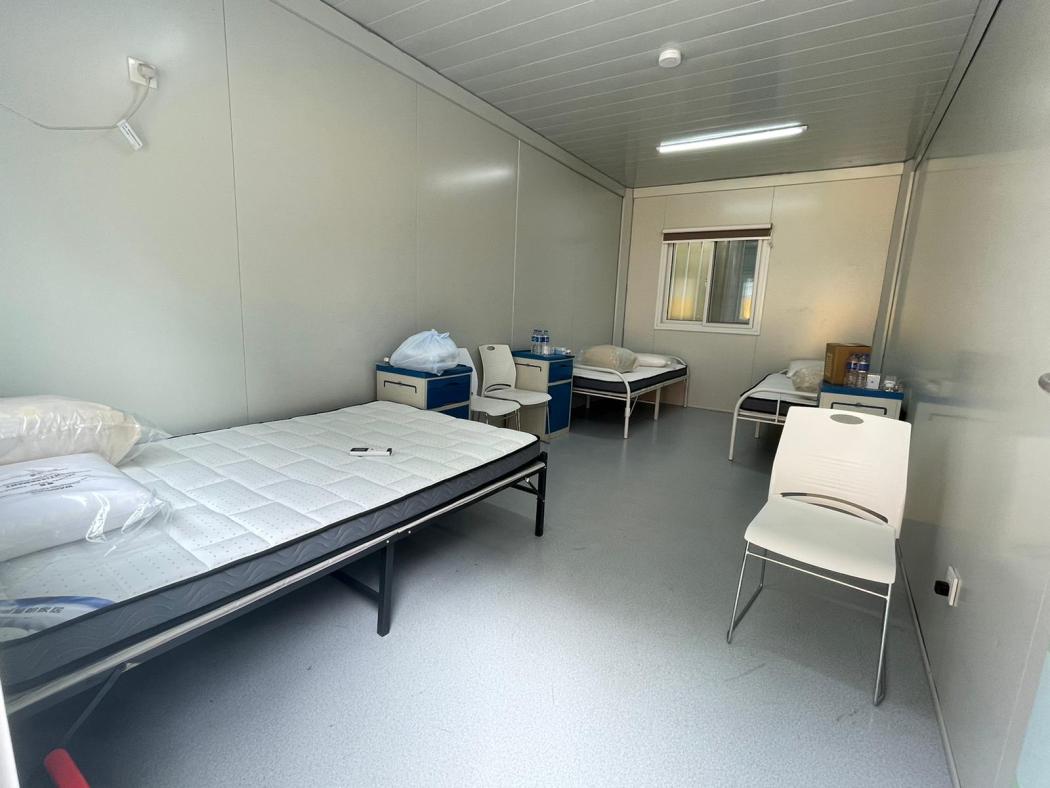
For Lui, her grandmother was the first of her three-person household to develop symptoms, and tested positive with a rapid test kit on February 27. The 77-year-old was coughing and had a sore throat but her body temperature was normal, Lui said. Both of them had received two doses of the German-produced BioNTech vaccine.
On February 28, Lui started to show similar symptoms and tested positive with a rapid antigen test. She reported her infection to the Department of Health the following day and indicated that she would like to be put in an isolation centre.
Lui said she then went to a community testing centre the next day, as requested by her employer, and the result came back as positive on March 3, but her grandmother did not take a further nucleic acid test. Lui received an SMS from the Fire Services Department on March 5 notifying her that she would be sent into one of the quarantine centres. In a confirmation call on March 6, she learnt that she would be going to Tsing Yi.
Lui’s grandmother was never called into isolation. Lui said that it was fortunate that her sister, who lived separately, could come in at night and look after her grandmother as she had not received any support from the authorities.
Free newspapers and entertainment
On Tuesday, the Security Bureau spokesperson said the government body would “continue to refine its services” at the Tsing Yi isolation camp and “actively communicate with occupants by adopting a small-district management and humanised approach.”

The spokesperson also announced that fruit and a broader choice of food would be served to residents, who could also enjoy free daily newspapers and “view different online entertainment platforms for free.”
However, Lui told HKFP that she has not received any fruit, newspapers or online entertainment services by Wednesday afternoon.
Tang, who left the quarantine facility on Wednesday afternoon, also said she had not had any newspapers or access to online entertainment platforms, but she told HKFP that residents could ask for fruit via the facility’s hotline and it would be supplied upon request.
When asked by HKFP, the Security Bureau said that it understood that people would hold different opinions on community quarantine facilities and promised to introduce improvements over time.
However, it said it had to emphasise that the primary function of these facilities was to “quickly isolate the infected from the community and cut off transmission” and authorities would prioritise all emergency and basic services such as the supply of regular meals. Any non-urgent issues or service enhancements would be arranged according to the resources and manpower available, as well as when donations were made by different sectors of society.
Meal choices
With regards to meal choices, Lui said she was told upon entry that she would be given a menu to indicate her food preferences after she settled in. Nevertheless, she told HKFP on Wednesday that she had still not received the menu despite asking staff for it twice on WhatsApp.
Tang said she was asked whether she would prefer vegetarian meals during her stay. She chose to go with the meat option.

The Security Bureau’s spokesman said on Tuesday that food suppliers would provide patients with four choices of meals every day, as well as halal and vegetarian options. Neither Lui nor Tang were presented with the full array of choices.
On Tuesday night, Tang said staff had missed several rooms when distributing dinner, including her own. She said they were provided snacks, cakes and fruit later that night after they told staff what had happened. “It was the first time I met the others [living next to me].” She said that it was “by coincidence that we did not get our meals.”
But Tang said she was generally satisfied with the meals and arrangements at the Tsing Yi quarantine facilities. “When there are that many people, I don’t expect [services] to be perfect.”
She said at least she felt like someone was there for the residents when they were in need. “It took me a maximum of four calls to reach staff,” Tang added. The situation was in stark contrast to reports from Penny’s Bay quarantine centre, where patients had to try hundreds of times to get through to the facility’s hotline.

On Monday, iCable reported that a patient was given two meals of “unhealthy” deep fried food in Tsing Yi while suffering from a sore throat, but neither Lui or Tang said they received similar food items in the camp.
When asked by HKFP on Wednesday, the Security Bureau said it had requested caters to ensure multiple choices of meals for residents, and said it would continue to monitor the quality of food provided.
Mainland China-style squat toilets and sockets
The toilet fit-outs across the quarantine facility were inconsistent, with some Western-style toilets and some squat toilets, which are more common in mainland China, Lui told HKFP.
Lui said she was not used to using squat toilets, so she walked to another area of the camp each time she went to the toilet.

“At first I thought I would rather drink less water,” Lui said. “I was born and raised in Hong Kong, and as a Hongkonger I have not used a squat toilet since I was a kid.”
Lui also told HKFP that she felt it was “absurd” that the facility had mainland Chinese power sockets and that the camp had to provide adaptors for patients as a result. “This is Hong Kong, after all,” she said.
The bathroom in Tang’s block also consisted of squat toilets, but she said they were fine for her. However, she said they might be less ideal for older patients.
Tang also said a rack for soap and shampoo and more hooks should be installed in the shower cubicles as currently they only had a single hook in each. She also said the shower heads were placed “too high” and she had to fully stretch her arm to reach one.
“Others who are shorter may not be able to take it down.” Tang said. “It looks six feet high to me.”
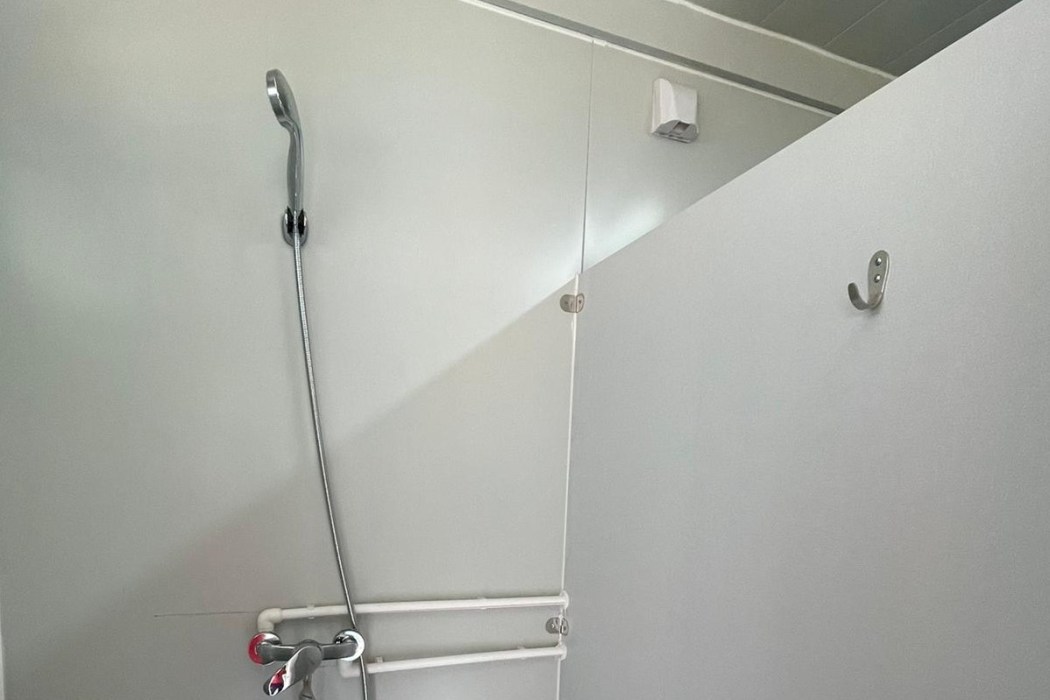
Ming Pao reported on Tuesday that a pool of water had formed outside one of the bathroom areas at the Tsing Yi isolation facility, and patients had to walk on plastic stools in order to reach the toilets without stepping in the water.
The Security Bureau responded to HKFP’s enquiry on Wednesday and said it believed the puddles had emerged on Sunday and were due to the rain on the unlevel ground. It said inspections during rainy days would be more frequent in the future to ensure that similar situations could be quickly dealt with.
Patients with mild symptoms only
Hong Kong’s fifth wave of Covid-19 has infected tens of thousands of citizens daily and overwhelmed the city’s public medical services. Hospitals have been running out of isolation wards and a surge in deaths has brought mortuaries to their limits.
While the city has been building several community isolation facilities similar to the one at Tsing Yi, public hospital doctors told HKFP that they were of little help as they mainly took in patients with mild symptoms who were able to look after themselves. Meanwhile, hospitals were unable to deal with the large number of serious, elderly and bedridden cases in need of constant oxygen supply and round-the-clock nursing.
On Wednesday, Chief Executive Carrie Lam said in her new daily Covid-19 press briefing that an emergency hospital supported by mainland medics at Lok Ma Chau Loop aimed to start providing services in mid-April.

Although the new isolation centres might not be helpful for alleviating the situation at public hospitals, and daily infections continue to exceed the city’s quarantine capacity, officials have suggested that the additional spaces could help those who would have suffered in home quarantine.
Speaking on Sunday before operations began at the Tsing Yi quarantine facility, Chief Secretary for Administration John Lee said the government was aware that some people were hoping to move into community isolation centres as their household conditions were not suitable for self-isolation at home.
The Fire Services Department set up a direct email, WhatsApp and WeChat account later in the day, allowing Covid-19 patients with mild symptoms and the ability to take care of themselves to request admission to these quarantine facilities.
Support HKFP | Policies & Ethics | Error/typo? | Contact Us | Newsletter | Transparency & Annual Report | Apps
Help safeguard press freedom & keep HKFP free for all readers by supporting our team

LATEST ON COVID-19 IN HONG KONG
HKFP GUIDES
Support HKFP | Policies & Ethics | Error/typo? | Contact Us | Newsletter | Transparency & Annual Report | Apps
Help safeguard press freedom & keep HKFP free for all readers by supporting our team


